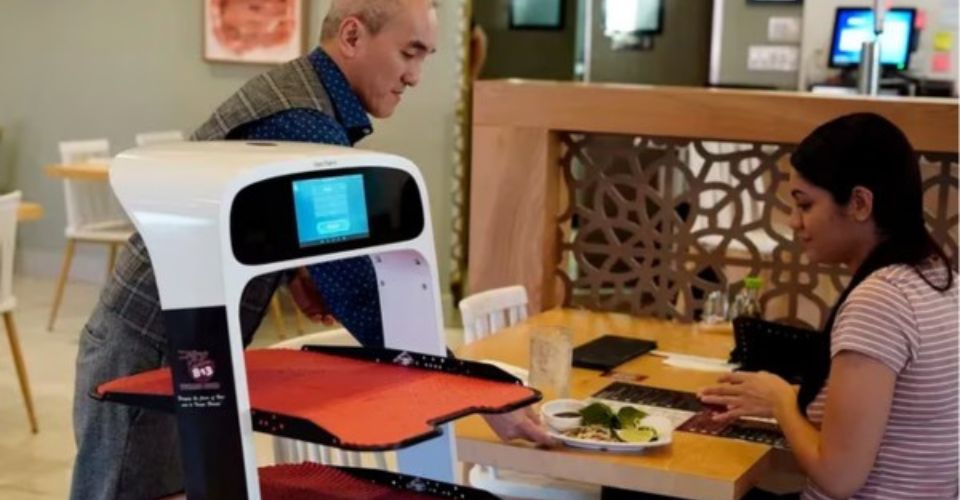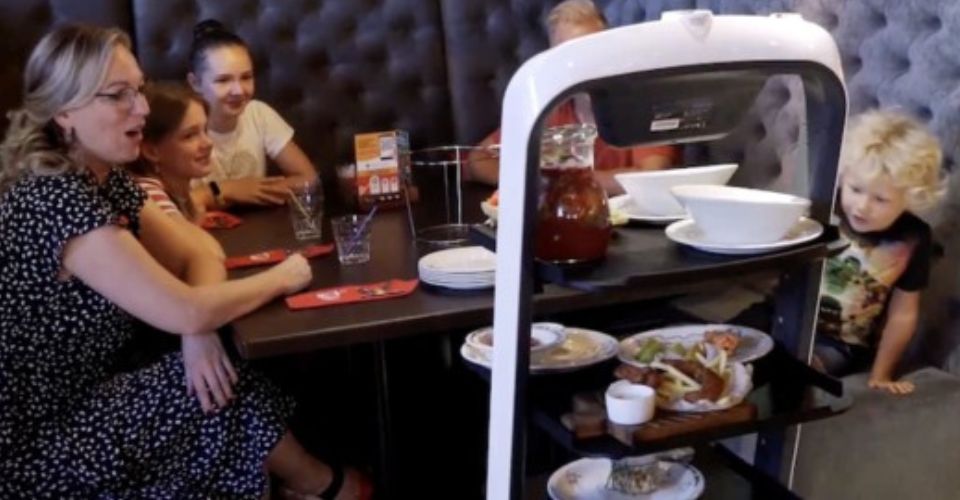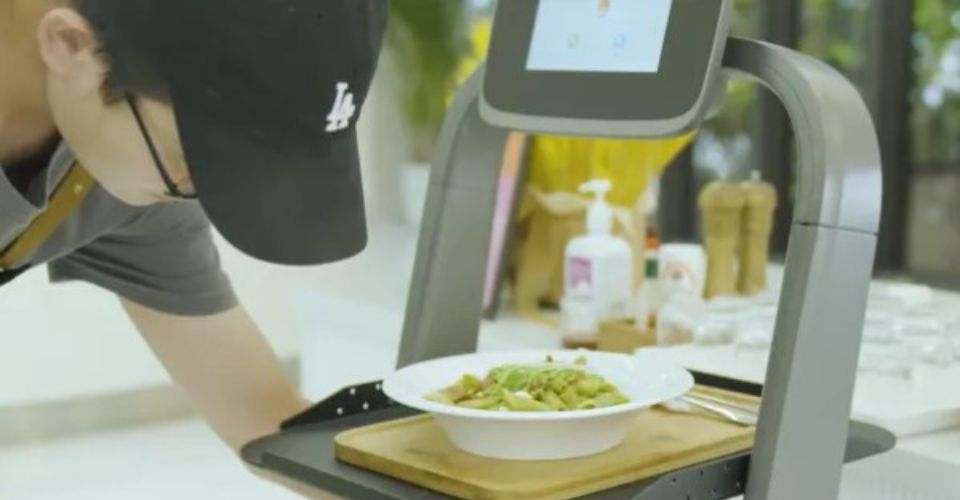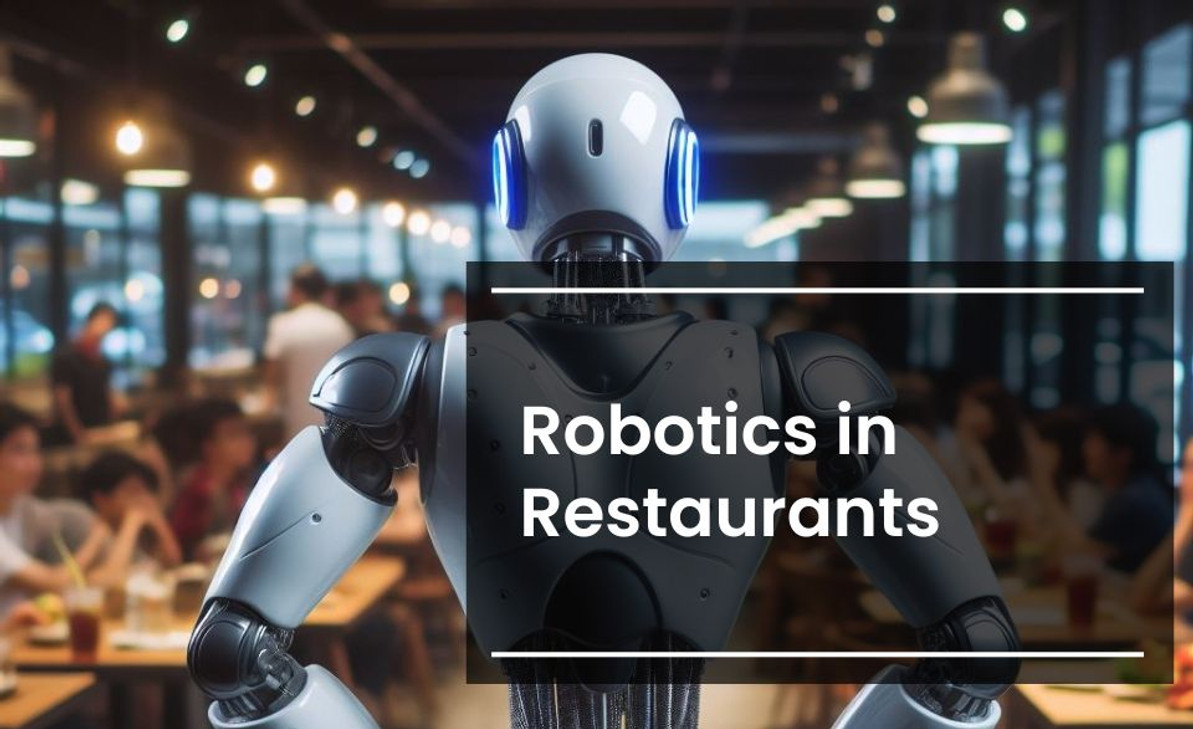Robotics in Restaurants
Restaurant business is more competitive now than ever, and what is more exciting than a robot to spice things up and win the rat race. Yes, robots bring efficiency, better customer experience and cost reduction. However, they are expensive and some people are not comfortable around them. These benefits and challenges are what we will focus on today.
Explore our Robot Machines and see how they can revolutionize your restaurant's beverage service!
How Robots help in Restaurant
Let's see what will happen with robots in restaurants.
Food Preparation:
Robotic arms revolutionize food preparation by accurately cooking dishes and identifying necessary ingredients for recipes. These advanced machines are programmed to handle specific cooking tasks with precision, reducing human error and ensuring consistency in taste and presentation. Following video from Spyce show how they use robot in cooking:
Delivery:
Robots ensure safer and more consistent deliveries. Take, for instance, the Asbis Robot (https://www.dubai-sensor.com/robotic-delivery-solution-for-food-and-beverage-service-industry/), a delivery robot: These autonomous vehicles navigate restaurant spaces with ease, delivering orders to customers' tables or designated pickup points. By eliminating the need for human delivery personnel, robots minimize the risk of accidents and errors while enhancing the overall dining experience through prompt and reliable service.
See below how:
Service:
Autonomous robots adeptly serve food and drinks, aiding waitstaff in dish transportation. Consider Smile Robotics's ACUR-C, capable of maneuvering between tables, retrieving trays, and ferrying them to the kitchen. These intelligent machines complement human servers by handling repetitive tasks, such as delivering orders and clearing tables, allowing restaurant staff to focus on providing personalized customer service and attending to guests' needs. By streamlining service operations, robots contribute to faster table turnover and increased customer satisfaction.
Benefits of Robotics in Restaurants
Increased Efficiency:
Robots can perform repetitive tasks with precision and consistency, leading to enhanced operational efficiency. From food preparation to delivery and cleaning, automation reduces the time and effort required to complete various restaurant tasks, allowing staff to focus on more complex and customer-centric activities.

Improved Customer Experience:
By streamlining service processes and minimizing wait times, robots contribute to a more pleasant dining experience for customers. Prompt and accurate order delivery, efficient table clearing, and personalized interactions facilitated by robotic assistants can leave a positive impression on guests, leading to higher satisfaction levels and increased patronage.

Better Food Safety:
Robots adhere to strict hygiene standards and food safety regulations, minimizing the risk of contamination and foodborne illnesses. Automated food preparation and delivery systems reduce human contact with ingredients and finished dishes, ensuring the integrity and freshness of meals served to customers.
Cost Savings:
While the initial investment in robotics may be significant, the long-term cost savings can be substantial. Robots can perform tasks round-the-clock without the need for breaks or overtime pay, leading to reduced labor costs. Additionally, automation reduces the risk of human errors and food wastage, further contributing to overall cost efficiency.
Optimized Workforce Management:
Integrating robots into restaurant operations allows managers to optimize staffing levels and allocate human resources more strategically. By assigning robots to handle routine tasks such as dishwashing or delivery, restaurant staff can focus on higher-value activities such as customer service and menu innovation, leading to a more productive and motivated workforce.

Adaptability to Market Trends:
In an ever-evolving foodservice industry, restaurants must stay agile and adapt to changing consumer preferences and market trends. Robots offer scalability and flexibility, allowing establishments to ramp up or adjust their operations in response to fluctuating demand or emerging trends. Whether it's accommodating delivery orders during peak hours or customizing menu offerings based on seasonal ingredients, robotic solutions provide restaurants with the agility to thrive in a competitive market.
Challenges of Robotics in Restaurants
Initial Investment Costs:
Acquiring and implementing robotic systems can involve substantial upfront costs, including the purchase of hardware, software, and installation expenses. For many restaurant owners, especially those operating on tight budgets, the initial investment may be prohibitive and require careful financial planning.
Maintenance and Repair:
Like any technology, robots require regular maintenance and occasional repairs to ensure optimal performance. Restaurant operators must allocate resources for ongoing maintenance tasks such as software updates, component replacements, and troubleshooting issues. Additionally, the need for specialized technical expertise to repair and service robotic equipment may pose challenges for smaller establishments with limited technical staff.
Integration with Existing Infrastructure:
Integrating robotic systems into existing restaurant workflows and infrastructure can be complex and time-consuming. Restaurants may need to reconfigure kitchen layouts, modify equipment, and train staff to adapt to new processes and technologies. Ensuring seamless integration without disrupting ongoing operations requires careful planning and coordination.
Staff Resistance and Training:
Introducing robots into the workplace can evoke concerns and resistance from existing staff members who fear job displacement or changes to their roles. Restaurant owners must address these concerns through transparent communication, training programs, and reassurance about the complementary nature of robotic technology. Providing comprehensive training to employees on how to operate, monitor, and collaborate with robots is essential to ensure smooth adoption and acceptance.
Technical Limitations and Reliability:
While robots offer impressive capabilities, they are not immune to technical limitations and reliability issues. Factors such as sensor malfunctions, software bugs, and mechanical failures can disrupt robot performance and impact restaurant operations. Ensuring robust quality control measures, backup systems, and contingency plans is crucial to mitigate the risk of downtime and service interruptions.
Regulatory and Legal Compliance:
Implementing robotic solutions in restaurants may raise regulatory and legal considerations related to safety standards, data privacy, and liability. Restaurant operators must navigate complex legal frameworks and ensure compliance with industry regulations governing the use of robotics in food service environments. Additionally, addressing concerns about the ethical implications of automation and its impact on employment may require proactive engagement with regulatory bodies and stakeholders.
Customer Acceptance and Experience:
While some customers may embrace the novelty and efficiency of robotic service, others may prefer human interaction and personalized service. Restaurant owners must strike a balance between leveraging robotic technology to improve efficiency while preserving the human touch and hospitality that defines the dining experience. Understanding customer preferences and feedback is essential to tailor robotic deployments in a way that enhances, rather than detracts from, the overall dining experience.
Conclusion
In summary, the integration of robotics within restaurant settings promises a multitude of benefits, including heightened operational efficiency, elevated customer experiences, and enhanced safety standards. While the prospect of incorporating these technologies may seem daunting due to initial costs and logistical challenges, proactive planning and strategic implementation can mitigate potential obstacles. By embracing innovation and fostering a culture of adaptability, restaurants can harness the transformative potential of robotics to streamline processes, optimize resource utilization, and drive sustainable growth in an increasingly competitive market.
Looking ahead, the future of dining is undoubtedly intertwined with technological advancements, with robotics poised to play a pivotal role in shaping the industry landscape. As restaurants strive to meet the evolving demands of modern consumers, embracing automation presents an opportunity to not only improve operational effectiveness but also foster deeper connections with patrons. By leveraging the unique strengths of both human expertise and robotic precision, restaurants can create synergistic environments where innovation thrives, and memorable dining experiences abound.
Keep the conversation going! Check out this related post.
Recent Posts
-
Booster Pump Troubleshooting and Maintenance: How to Fix and Prevent Common Issues
1. Introduction Imagine turning on your faucet only to be greeted with a weak trickle of water when …22nd Apr 2025 -
Energy-Efficient Booster Pumps: Selection and Tips for Maximizing Performance
1. Introduction Imagine never having to deal with fluctuating water pressure, noisy pumps, or skyroc …19th Apr 2025 -
Booster Pumps for Sustainable Water Systems: Irrigation and Rainwater Harvesting Solutions
1. Introduction Water scarcity is no longer a distant threat—it’s a reality affecti …16th Apr 2025




